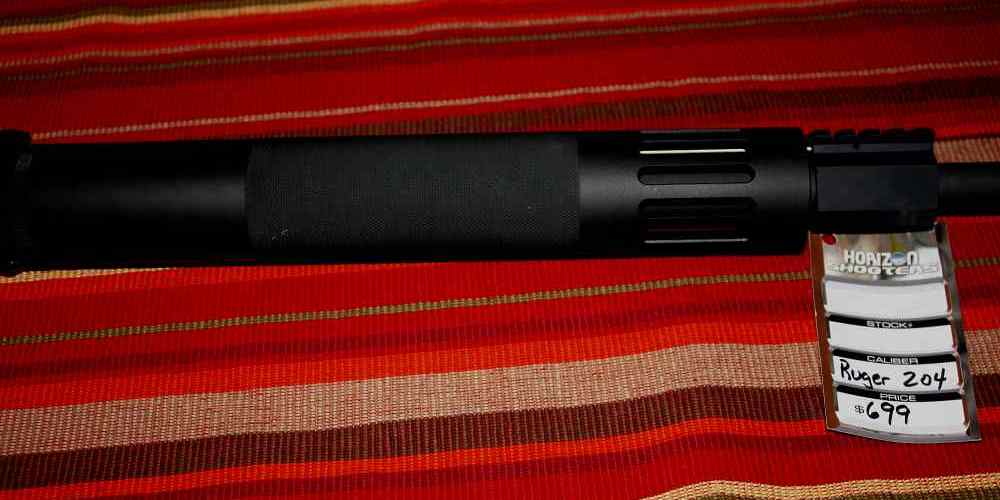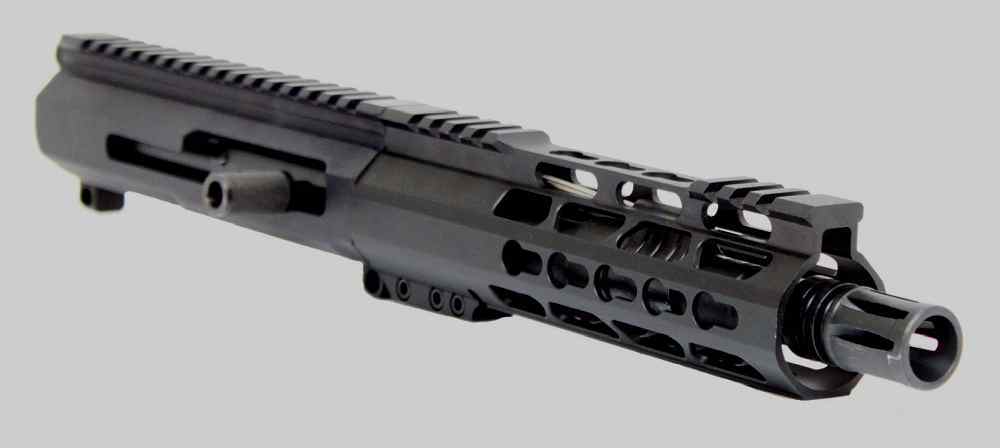“Precision matters: Mastering AR15 upper receiver tolerances for ultimate accuracy.”
Importance of AR15 Upper Receiver Tolerances
When it comes to building or customizing an AR15 rifle, one of the most important factors to consider is the upper receiver tolerances. The upper receiver is a critical component of the AR15 platform, as it houses the bolt carrier group, barrel, and handguard. Understanding the tolerances of the upper receiver is crucial for ensuring optimal performance and accuracy of your rifle.
Upper receiver tolerances refer to the amount of allowable variance in the dimensions and fit of the various components that make up the upper receiver. Tolerances can vary between manufacturers and can have a significant impact on the overall performance of the rifle. Tighter tolerances generally result in a more precise fit between components, which can lead to improved accuracy and reliability.
One of the key areas where upper receiver tolerances play a critical role is in the alignment of the barrel and the upper receiver. A properly aligned barrel is essential for achieving consistent accuracy and minimizing barrel wear. If the upper receiver tolerances are too loose, it can result in misalignment of the barrel, which can negatively impact accuracy and potentially lead to malfunctions.
In addition to barrel alignment, upper receiver tolerances also affect the fit of the bolt carrier group. A tight fit between the bolt carrier group and the upper receiver is essential for reliable cycling and consistent performance. If the tolerances are too loose, it can result in excessive play between the components, which can lead to malfunctions and decreased accuracy.
Another area where upper receiver tolerances are important is in the fit of the handguard. A properly fitted handguard is essential for mounting accessories such as optics, lights, and grips. If the tolerances are too loose, it can result in a wobbly handguard, which can affect the zero of your optics and overall shooting performance.
When selecting an upper receiver for your AR15 build, it is important to consider the tolerances of the manufacturer. Some manufacturers are known for producing upper receivers with tighter tolerances, which can result in improved accuracy and reliability. However, tighter tolerances can also make assembly more challenging, as components may require more precise fitting.
On the other hand, some manufacturers produce upper receivers with looser tolerances, which can make assembly easier but may result in decreased accuracy and reliability. It is important to strike a balance between tight tolerances for optimal performance and ease of assembly.
In conclusion, understanding AR15 upper receiver tolerances is essential for building a reliable and accurate rifle. Tighter tolerances generally result in improved accuracy and reliability, but may require more precise assembly. On the other hand, looser tolerances may make assembly easier but can lead to decreased performance. When selecting an upper receiver, it is important to consider the tolerances of the manufacturer and how they will impact the overall performance of your rifle. By paying attention to upper receiver tolerances, you can ensure that your AR15 build is optimized for accuracy and reliability.

How Upper Receiver Tolerances Affect Accuracy
When it comes to building or customizing an AR15 rifle, one of the key components to consider is the upper receiver. The upper receiver plays a crucial role in the overall accuracy and performance of the rifle, and understanding the tolerances of the upper receiver is essential for achieving optimal results.
Upper receiver tolerances refer to the amount of variation allowed in the dimensions and fit of the various components that make up the upper receiver. Tolerances can vary depending on the manufacturer and the specific model of the upper receiver. Tighter tolerances generally result in a more precise fit and better overall performance, while looser tolerances may lead to decreased accuracy and reliability.
One of the main factors that can impact accuracy is the fit between the upper receiver and the barrel. A tight fit between these two components is essential for ensuring consistent shot placement and minimizing barrel movement during firing. If the upper receiver has loose tolerances, it may not provide a secure fit for the barrel, leading to decreased accuracy and potential issues with consistency.
In addition to the fit between the upper receiver and the barrel, tolerances also play a role in the alignment of the various components within the upper receiver. A well-aligned upper receiver will ensure that the bolt carrier group, gas system, and other components function smoothly and reliably. If the tolerances are too loose, it can result in misalignment of these components, leading to malfunctions and decreased accuracy.
Another important aspect to consider when it comes to upper receiver tolerances is the quality of the materials used in its construction. High-quality materials, such as aircraft-grade aluminum, can help ensure that the upper receiver is durable and able to withstand the rigors of shooting. Lower-quality materials may not hold up as well over time, leading to potential issues with accuracy and reliability.
When selecting an upper receiver for your AR15 build, it’s important to consider the tolerances of the specific model you are interested in. Look for manufacturers that are known for producing high-quality components with tight tolerances to ensure optimal performance. Additionally, consider factors such as material quality and overall construction to ensure that you are getting a reliable and accurate upper receiver.
In conclusion, understanding upper receiver tolerances and their impact on accuracy is essential for building a high-performance AR15 rifle. Tight tolerances, proper fit, and high-quality materials are all key factors to consider when selecting an upper receiver for your build. By paying attention to these details, you can ensure that your rifle performs reliably and accurately, whether you are shooting for sport or self-defense.
Factors Influencing Upper Receiver Tolerances
When it comes to building or customizing an AR15 rifle, one of the key components to consider is the upper receiver. The upper receiver plays a crucial role in the overall performance and accuracy of the rifle. One important factor to consider when selecting an upper receiver is its tolerance levels.
Upper receiver tolerances refer to the amount of variation allowed in the dimensions of the receiver. Tolerances can have a significant impact on the fit and function of the rifle, as well as its accuracy. Understanding upper receiver tolerances and how they can affect your rifle is essential for making informed decisions when building or customizing your AR15.
Tolerances can vary between different manufacturers and models of upper receivers. Some receivers are built to tighter tolerances, while others may have looser tolerances. Tighter tolerances generally result in a more precise fit between the upper receiver and other components of the rifle, such as the barrel and bolt carrier group. This can lead to improved accuracy and consistency in performance.
On the other hand, receivers with looser tolerances may allow for more variation in the fit of components, which can impact the overall performance of the rifle. Loose tolerances can result in increased play between components, potentially leading to decreased accuracy and reliability. It is important to consider the intended use of the rifle when selecting an upper receiver with the appropriate tolerances.
Factors such as material quality, manufacturing processes, and design can all influence the tolerances of an upper receiver. High-quality materials and precise machining can result in tighter tolerances, while lower-quality materials and less precise manufacturing may lead to looser tolerances. Additionally, the design of the receiver can also impact its tolerances, with some designs inherently allowing for tighter tolerances than others.
When selecting an upper receiver, it is important to consider how the tolerances will impact the overall performance of the rifle. For precision shooting or competition use, a receiver with tighter tolerances may be preferable to ensure consistent accuracy. However, for general plinking or recreational shooting, a receiver with looser tolerances may be sufficient.
It is also worth noting that upper receiver tolerances can be adjusted through the use of shims or other methods to improve fit and function. If you find that your upper receiver has looser tolerances than desired, there are ways to tighten up the fit to improve performance. Conversely, if you have a receiver with overly tight tolerances, adjustments can be made to ensure proper function without sacrificing reliability.
In conclusion, understanding upper receiver tolerances and their impact on accuracy is essential for building or customizing an AR15 rifle. Tighter tolerances generally result in improved accuracy and consistency, while looser tolerances may lead to decreased performance. Consider factors such as material quality, manufacturing processes, and design when selecting an upper receiver with the appropriate tolerances for your intended use. And remember, adjustments can be made to fine-tune the fit of your upper receiver to optimize performance.
Tips for Improving AR15 Upper Receiver Tolerances
When it comes to building or customizing an AR15 rifle, one of the key components to consider is the upper receiver. The upper receiver plays a crucial role in the overall accuracy and performance of the rifle, so understanding its tolerances is essential for achieving optimal results.
Upper receiver tolerances refer to the amount of variation allowed in the dimensions and fit of the various parts that make up the upper receiver. Tight tolerances mean that the parts fit together snugly with minimal play, while loose tolerances allow for more movement and potential for error.
Having tight tolerances in your upper receiver can have a significant impact on the accuracy of your rifle. When all the parts fit together precisely, there is less room for movement or play, resulting in more consistent shot placement. Tight tolerances also help to reduce vibration and harmonics, which can affect the trajectory of the bullet.
On the other hand, loose tolerances can lead to issues such as misalignment of the barrel and receiver, which can cause the rifle to shoot off target. Loose tolerances can also result in increased wear and tear on the components, leading to a shorter lifespan for your rifle.
To improve the tolerances of your AR15 upper receiver, there are several tips you can follow. First and foremost, invest in high-quality components from reputable manufacturers. Cheaper, lower-quality parts are more likely to have looser tolerances, which can negatively impact the performance of your rifle.
When assembling your upper receiver, pay close attention to the fit of each part. Make sure that all the components fit together smoothly and snugly, without any excessive play or movement. If you encounter any parts that do not fit properly, consider replacing them with higher-quality alternatives.
Another tip for improving upper receiver tolerances is to use a torque wrench when assembling your rifle. Proper torque settings ensure that all the components are tightened to the correct specifications, which helps to maintain tight tolerances and prevent issues such as over-tightening or stripping of threads.
Regular maintenance and cleaning of your AR15 upper receiver are also essential for maintaining tight tolerances. Dirt, debris, and fouling can build up over time and affect the fit of the components. Make sure to clean your rifle regularly and inspect all the parts for signs of wear or damage.
In conclusion, understanding AR15 upper receiver tolerances and their impact on accuracy is crucial for building a high-performance rifle. Tight tolerances help to ensure consistent shot placement and reduce the risk of issues such as misalignment or wear. By following the tips outlined in this article, you can improve the tolerances of your upper receiver and enhance the overall performance of your AR15 rifle.
Common Misconceptions about Upper Receiver Tolerances
When it comes to building or customizing an AR15 rifle, one of the key components to consider is the upper receiver. The upper receiver plays a crucial role in the overall performance and accuracy of the rifle. However, there are many misconceptions surrounding upper receiver tolerances and their impact on accuracy. In this article, we will delve into the common misconceptions about upper receiver tolerances and shed some light on how they can affect the accuracy of your AR15 rifle.
One common misconception is that tighter tolerances always result in better accuracy. While it is true that tighter tolerances can lead to improved consistency and precision, it is not always the case that tighter is better. In fact, overly tight tolerances can sometimes lead to issues such as increased friction and wear, which can actually have a negative impact on accuracy. It is important to strike a balance between tight tolerances for precision and loose tolerances for reliability.
Another misconception is that all upper receivers are created equal. In reality, there can be significant variations in quality and tolerances among different manufacturers. Some manufacturers may cut corners or use lower quality materials, which can result in inconsistencies and reduced accuracy. It is important to do your research and choose a reputable manufacturer that produces high-quality upper receivers with tight tolerances.
One of the most common misconceptions is that upper receiver tolerances have little to no impact on accuracy. Some shooters believe that as long as the upper receiver is properly assembled and functions correctly, tolerances are not a significant factor in accuracy. However, the reality is that even small variations in tolerances can have a noticeable impact on accuracy. Tighter tolerances can help ensure that the barrel is properly aligned and that there is minimal play between the upper and lower receivers, which can improve consistency and precision.
It is also important to consider the role of the barrel in relation to upper receiver tolerances. The barrel is one of the most critical components of an AR15 rifle when it comes to accuracy. If the upper receiver tolerances are too loose or inconsistent, it can affect the alignment of the barrel and lead to issues such as barrel whip or inconsistent bullet trajectory. Tighter tolerances in the upper receiver can help ensure that the barrel is properly aligned and that there is minimal movement during firing, which can improve accuracy.
In conclusion, understanding upper receiver tolerances and their impact on accuracy is crucial for anyone looking to build or customize an AR15 rifle. While there are many misconceptions surrounding upper receiver tolerances, it is important to recognize the importance of tight tolerances for consistency and precision. Choosing a high-quality upper receiver from a reputable manufacturer with tight tolerances can help ensure that your AR15 rifle performs at its best and delivers the accuracy you desire. Remember to do your research, choose quality components, and pay attention to tolerances for optimal performance.





